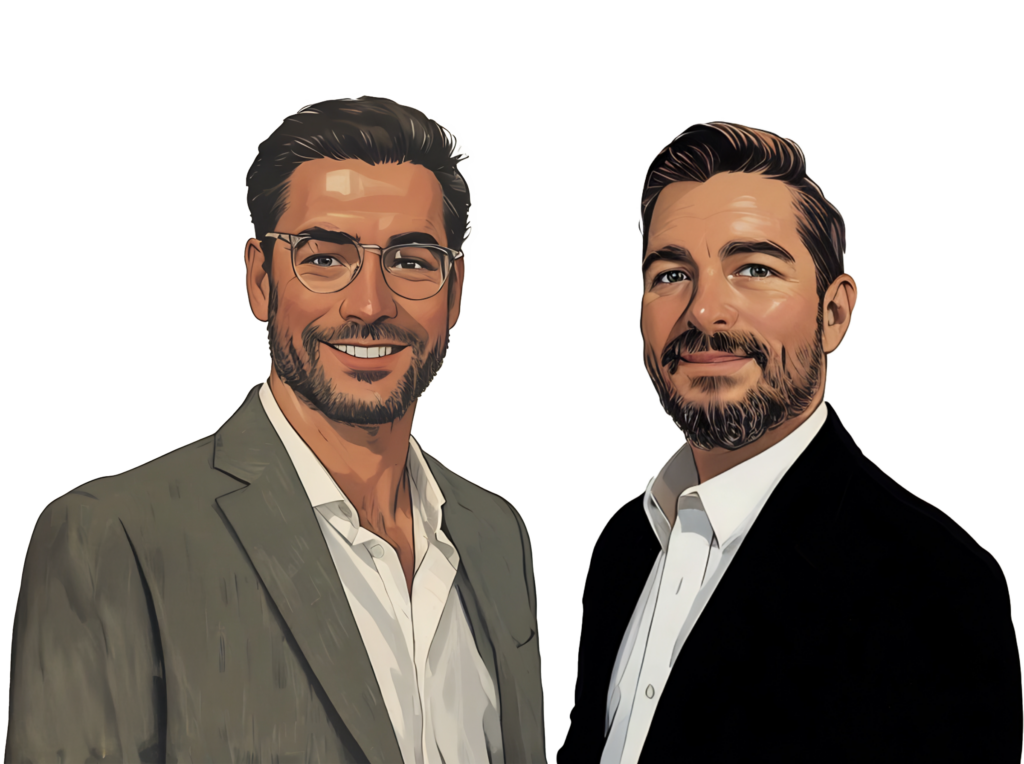The ‘Rejection Reframe’: How Top Candidates Turn Every ‘No’ into a Future ‘Yes’
You crafted the perfect resume, aced the interviews, and felt a genuine connection with the hiring team. Then the email arrives: “We’ve decided to move forward with another candidate.” Your stomach drops as another opportunity slips away.
If this scenario feels painfully familiar, you’re in good company. The average job search includes 10-20 rejections before landing an offer, according to a recent JobScan study. But here’s what separates merely good candidates from exceptional ones: their response to rejection.
Elite job seekers understand something crucial: rejection is often the beginning, not the end, of a professional relationship. In fact, according to research from the Kellogg School of Management, 40% of executive hires come from candidates who were previously rejected by the same company.
The “Rejection Reframe” isn’t about positive thinking or clichés—it’s a strategic approach to transform professional disappointment into future opportunity. Let’s explore exactly how top performers turn today’s “no” into tomorrow’s “yes.”
☑️ Key Takeaways
- Rejection doesn’t mean you failed—it’s feedback, and reframing it helps you grow instead of getting discouraged.
- Most rejections aren’t personal—they often come down to timing, fit, or internal decisions beyond your control.
- Use each rejection as a learning tool, reviewing your approach, resume, or interview responses for improvement.
- Staying positive and persistent not only boosts resilience but also makes you more prepared for the next opportunity.
The Psychology of Rejection in Job Searching
Job rejection triggers the same neural pathways as physical pain. This isn’t metaphorical—functional MRI studies show that the brain processes social rejection in the same regions that register physical discomfort.
This evolutionary response made sense when social exclusion meant potential danger, but in modern professional contexts, it creates an emotional hurdle that many candidates never overcome. Most job seekers respond in one of three counterproductive ways:
- Avoidance (never following up after rejection)
- Personalization (viewing rejection as a judgment of their worth)
- Defensiveness (mentally or actively arguing against the decision)
Yet research from the American Psychological Association shows that candidates who demonstrate resilience after rejection are rated as more emotionally intelligent by hiring managers—a trait consistently ranked among the top five desired qualities in new hires.
How hiring managers see you after rejection significantly impacts your future opportunities with that organization. This is where the reframe begins.
Still Using An Old Resume Template?
Hiring tools have changed — and most resumes just don’t cut it anymore. We just released a fresh set of ATS – and AI-proof resume templates designed for how hiring actually works in 2025 all for FREE.
The Rejection Reframe Mindset
Before any strategic action, successful candidates make three critical mindset shifts:
- Rejection is information, not evaluation. A “no” doesn’t mean you’re inadequate—it means there was a gap between what you presented and what they needed at this specific moment.
- Every rejection contains data for improvement. Like a scientist whose experiment yields unexpected results, skilled job seekers extract valuable insights from each rejection.
- Relationships outlast rejections. Career development is a marathon, not a sprint. A company that isn’t ready to hire you today may be your perfect match in six months.
These mental shifts transform rejection from an emotional setback into a strategic opportunity.
Interview Guys Tip: Create a personal “rejection ritual” that helps you process the emotional impact before crafting your professional response. This might be a 30-minute walk, a conversation with a trusted mentor, or simply writing out your feelings privately. The goal is to address the emotional component separately so it doesn’t bleed into your professional follow-up.
Strategy #1: The Value-Add Follow-Up
The standard “thank you for considering me” email after rejection accomplishes nothing. Top candidates instead use the Follow-Up Email Hack Sheet approach: they provide unexpected value even after being rejected.
This strategic response typically includes:
- Genuine appreciation for the opportunity
- Brief acknowledgment of the decision
- A specific, valuable insight or resource related to a challenge discussed during interviews
- Reaffirmation of interest in future opportunities
- A clear next step or timeline for further communication
For example:
Subject: Thank you + Thought on your customer retention challenge
Hi [Name],
Thank you for letting me know your decision on the Customer Success Manager role. While I'm disappointed not to join your team at this time, I appreciate the consideration and particularly enjoyed our conversation about enhancing customer retention.
After our discussion about the onboarding friction points, I came across this research on reducing SaaS implementation abandonment that directly addresses the issues you mentioned: [Link/attachment]. I thought it might be useful as your team tackles this challenge.
I remain very interested in contributing to [Company] in the future. Would it be alright if I checked in with you in about three months to see if any new opportunities have emerged that might be a better fit?
Best regards,
[Your Name]
This approach demonstrates professionalism while subtly reinforcing your value and continuing the relationship. It transforms rejection from an endpoint into a touchpoint.
Strategy #2: The Feedback Loop
Only 13% of rejected candidates ask for feedback, according to a survey by LinkedIn. Yet this minority group is 4x more likely to be considered for future roles.
Effectively requesting and implementing feedback requires:
- Timing the request appropriately (typically in your initial response to rejection)
- Framing the request constructively (not defensively or argumentatively)
- Asking specific questions rather than general ones
- Actually implementing valuable feedback
- Following up to demonstrate improvement
A effective feedback request might look like:
I appreciate the time you've invested in considering my candidacy. To help me improve for future opportunities, would you be willing to share one area where my experience or interview responses could have been stronger? Specific feedback would be incredibly valuable for my professional development.
Interview Guys Tip: Categorize the feedback you receive into “actionable gaps” (skills or experiences you can actually develop) versus “preference mismatches” (subjective or company-specific preferences). Focus your energy on addressing the actionable gaps while recognizing that some preferences may simply indicate a fit issue rather than a deficiency.
Strategy #3: The Relationship Investment
Elite candidates view hiring managers and recruiters as valuable professional relationships regardless of immediate job outcomes. For evidence of this strategy’s effectiveness, look no further than the success stories highlighted in our Hidden Job Market Success article, where candidates who maintained professional relationships after rejection eventually landed positions that were never publicly advertised.
Effective relationship investment includes:
- Connecting on LinkedIn with a personalized message (see examples in our LinkedIn Connection Request Template guide)
- Periodic check-ins with relevant updates or value-adds (every 2-3 months)
- Engaging thoughtfully with their content and professional achievements
- Requesting informal guidance on specific career questions
The key distinction is professional persistence versus personal pushiness. Successful candidates focus on adding value to the relationship rather than repeatedly asking about job opportunities.
Consider this approach for maintaining connection:
Hi [Name],
I hope you've been well since we last spoke. I recently implemented the project management approach we discussed during my interview, with some excellent results—we reduced delivery time by 30%. I remember you mentioned this was a focus area for your team, so I thought you might find the specific workflow helpful: [Brief description or attachment].
I continue to follow [Company]'s growth with interest, particularly the recent [specific development]. If you have 15 minutes in the coming weeks, I'd love to get your perspective on [specific industry trend or challenge]. If not, no pressure at all—I simply value your insights.
Best regards,
[Your Name]
This approach positions you as a thoughtful professional while keeping the door open for future opportunities.
Strategy #4: The Strategic Pivot
Patterns in rejection provide invaluable data for refining your job search approach. Top candidates track their rejections methodically, looking for recurring themes that might indicate:
- Skill gaps that need addressing
- Experience misalignments
- Cultural fit issues
- Communication or interview technique adjustments
- Job target recalibration needs
One candidate I worked with noticed she consistently advanced to final rounds but rarely received offers. By requesting feedback, she discovered that while her technical skills were impressive, she wasn’t effectively demonstrating leadership potential. After adjusting her interview stories to highlight team impact, her offer rate tripled.
Rejection patterns reveal opportunities for targeted improvement that general job search advice cannot provide.
Interview Guys Tip: Create a simple “rejection analysis” spreadsheet with columns for the company, position, stage of rejection, feedback received (if any), and your hypothesis about the key factor. After 5-7 rejections, look for patterns and adjust your approach accordingly.
Strategy #5: The Network Expansion
Every person you meet during your job search—even those who reject you—represents potential network growth. The Coffee Chat Strategy can be particularly effective after rejection, when hiring managers often feel more comfortable connecting you with others without the pressure of their own hiring decision.
To expand your network through rejection:
- Express interest in staying connected to the industry/function
- Ask if they might know others in similar roles at different organizations
- Request a brief conversation to gather broader industry insights
- Follow through professionally on any introductions provided
For example:
While I understand this role wasn't the right fit, I remain very interested in the [industry/function] space. Would you happen to know anyone at other organizations who might be open to a brief conversation about their career path in this field? I'd greatly appreciate any connections you might be comfortable sharing.
Each rejection has the potential to expand your professional network by 2-3 connections if approached strategically.
When to Move On
While persistence is valuable, recognizing when to redirect your energy is equally important. Signs that it’s time to move on from a specific opportunity include:
- Multiple rejections from the same organization without encouraging feedback
- Clear indications of fundamental misalignment with requirements
- Non-responsive or dismissive communication after follow-up attempts
- Your own realization that the role or company isn’t an optimal fit
Strategic persistence means focusing your energy where it has the highest probability of return. Sometimes, the most productive next step is to thank the contact for their time, express openness to future opportunities, and refocus on more promising prospects.
Turning Rejection Into Opportunity
The “Rejection Reframe” isn’t about denying disappointment—it’s about strategically leveraging it for future success. By implementing these approaches consistently, you transform rejection from a career obstacle into a career catalyst.
Remember that hiring is cyclical. Companies’ needs change, decision-makers move positions, and your qualifications continue to evolve. The candidate who maintains professional relationships, demonstrates growth, and consistently adds value becomes the obvious choice when the right opportunity eventually emerges.
In a competitive job market, your response to rejection becomes as important as your initial application. Master the reframe, and you’ll join the elite candidates who understand that in professional life, “no” often simply means “not yet.”
Still Using An Old Resume Template?
Hiring tools have changed — and most resumes just don’t cut it anymore. We just released a fresh set of ATS – and AI-proof resume templates designed for how hiring actually works in 2025 all for FREE.

BY THE INTERVIEW GUYS (JEFF GILLIS & MIKE SIMPSON)
Mike Simpson: The authoritative voice on job interviews and careers, providing practical advice to job seekers around the world for over 12 years.
Jeff Gillis: The technical expert behind The Interview Guys, developing innovative tools and conducting deep research on hiring trends and the job market as a whole.
